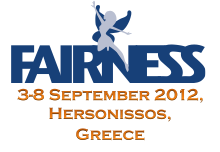Sprecher
Dr.
Denis Parganlija
(Vienna TU)
Beschreibung
There is a range of QCD phenomena beyond the reach of first-principles QCD. The well-known running of the strong coupling induces a strongly bound, non-perturbative regime of QCD in which hadrons are formed. The non-perturbativity forces us to reach for effective approaches in order to understand hadron structures and interactions.
These structures and interactions are particularly important in vacuum because: (i) first-principles calculations fail in vacuum and (ii) vacuum observables, once extended to non-vanishing T and \mu, give us remarkable insight into very important phenomena such as deconfinement and the chiral transition. An effective approach of QCD will, therefore, ideally provide us with insight into both perturbative as well as non-perturbative regimes of QCD.
I will give an overview of an effective approach that does exactly that: the Linear Sigma Model with scalar, pseudoscalar, vector and axial-vector mesons, glueball and baryons. I will discuss what has already been done in vacuum and the many extensions of the model to finite temperatures and densities.
Autor
Dr.
Denis Parganlija
(Vienna TU)
Co-Autoren
Prof.
Dirk H. Rischke
(Frankfurt University)
Dr.
Francesco Giacosa
(Frankfurt University)

